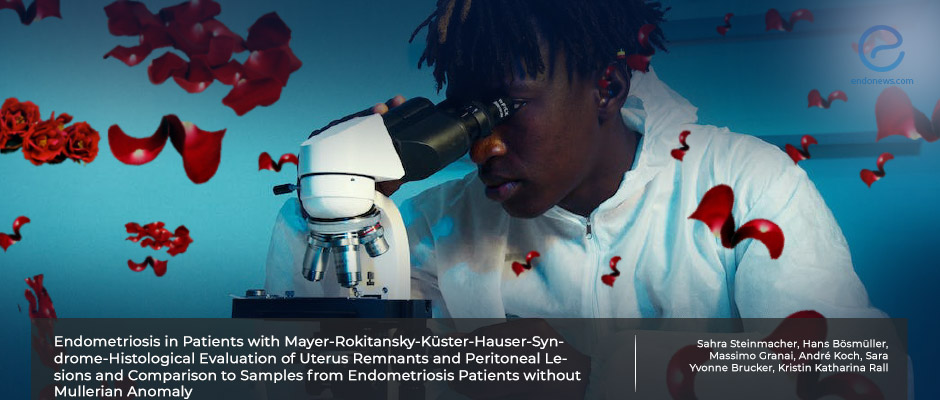Uterine agenesis patients may have endometriosis too
Dec 21, 2022
First published scientific research paper on endometriosis in uterine agenesis patients
Key Points
Highlights:
- Congenital Mayer-Rokitansky-Küster-Hauser (MRKH) syndrome consists of the absence of the uterus and upper part of the vagina, occurring in 1 of 4500 female newborns.
- The reported incidence of uterine remnants varies from 50% to almost 100% of all MRKH syndromic patients.
Importance:
- About one-half of MRKH syndrome patients with uterine remnants have cyclic symptoms caused by the proliferation of the endometrium, endometriosis, or myomas.
What's done here:
- The authors have analyzed possible differences between the endometrium in uterine remnants and endometriosis in these patients.
- Additionally, comparisons were made with samples from endometriosis patients to shed light on the cause and pathogenesis of MRKH syndrome and endometriosis.
Key Results:
- There were 319 patients undergoing neovagina reconstruction and removal of uterine remnants between the years 2010 and 2021.
- Among these patients, endometriosis tissue was detected in 9 (3.1%).
- All endometriotic samples from these patients showed increased expression of estrogen and progesterone receptors.
- In two patients, the proliferation index was significantly higher in peritoneal endometriotic lesions than in the remnant endometria.
Limitation of the study:
- Since MRKH syndrome is a rare entity it is hard to establish a cohort with an adequate number of patients for valuable statistical analysis.
- However, this study consists of a unique collection of referral patients to a tertiary medical center.
Lay Summary
Dr. Steinmacher and colleagues at the Tuebingen University Hospital, Germany have published their unique study on a series of patients with congenital Mayer-Rokitansky-Küster-Hauser (MRKH) syndrome in a recent issue of the “Journal of Clinical Medicine”.
The absence uterus and upper part of the vagina with normal secondary sex characteristics and normal female karyotype characterize congenital MRKH syndrome. The estimated incidence is about 1 of 4500 live female births.
The reported incidence of the presence of uterine remnants varies from 50% to almost 100% of all MRKH patients in published papers. Nearly, 50% of MRKH syndrome patients with uterine remnants have cyclic symptoms caused by the proliferation of the endometrium, endometriosis, or myomas. Since this syndrome is quite rare it is hard to establish a cohort with a considerable number of patients. This study has a suitable number of patients referred to a tertiary medical center.
The authors have conducted a retrospective histopathologic analysis of endometriotic tissue and endometrium of uterine remnants from patients with MRKH syndrome and their comparison to samples from patients with endometriosis. At Tuebingen University Hosta, there were 319 patients undergoing neovagina reconstruction and removal of uterine remnants between the years 2010 and 2021. The number of total cases with endometriotic tissue was 9 (3.1%), and in four patients, endometrial remnants could be sufficiently compared to endometriotic lesions. All endometriotic samples from these patients showed increased expression of estrogen and progesterone receptors by immunostaining. In two patients, the proliferation index was significantly higher in peritoneal endometriotic lesions than in the remnant endometria.
The authors conclude that significant immunohistochemical variability between uterine endometrium remnants and endometriotic lesions in patients with MRKH syndrome compared with samples from patients with endometriosis without Mullerian anomaly may well point to a possible hypothesis for the yet-unknown etiology of endometriosis.
Research Source: https://pubmed.ncbi.nlm.nih.gov/36362689/
MRKH syndrome uterine agenesis endometriosis in uterine agenesis immunohistochemistry

